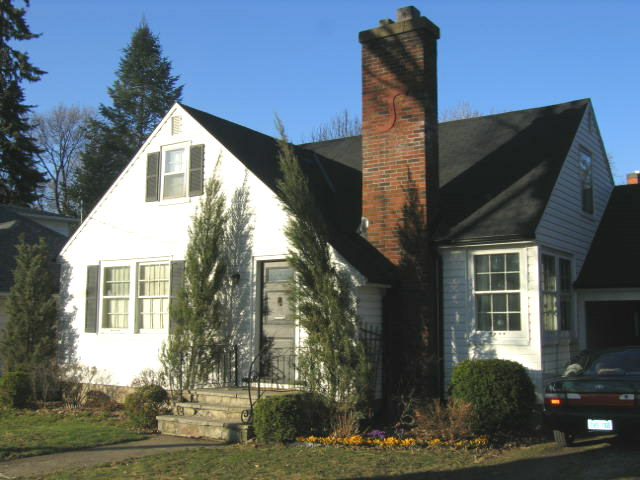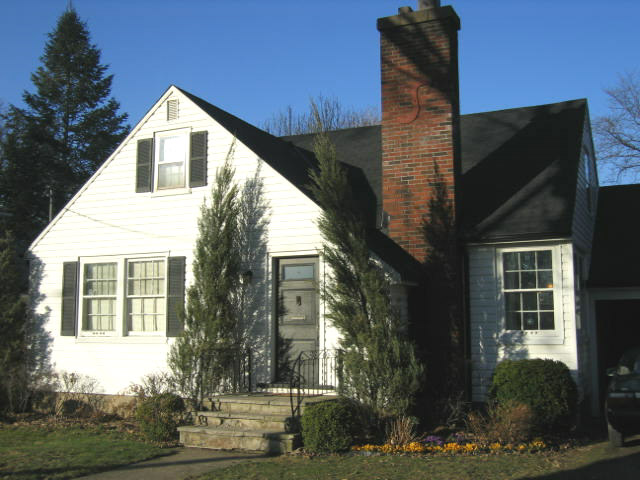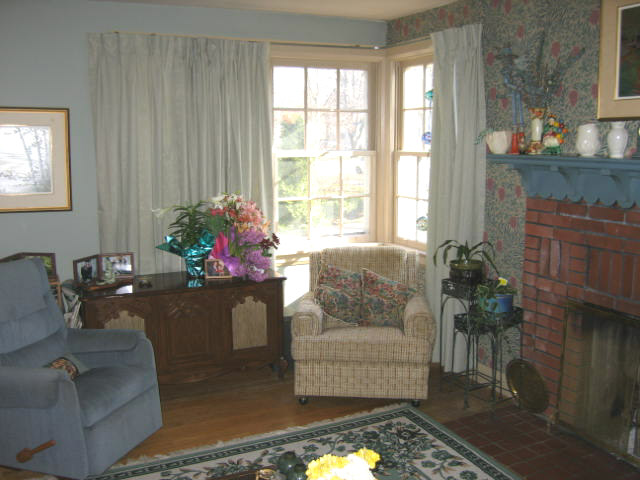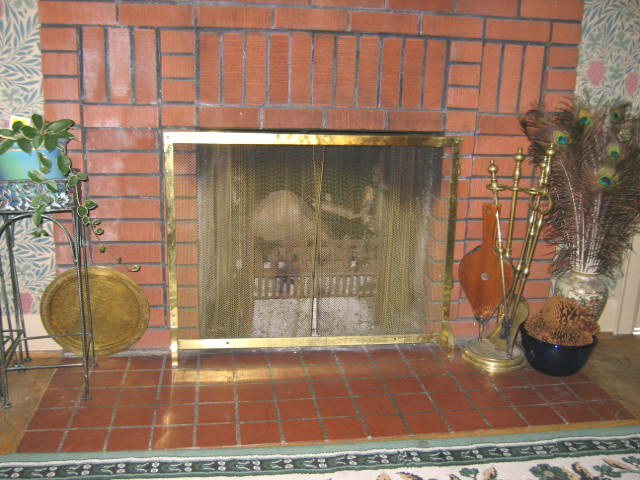I saw this article in the St. Catharines Standard a few weeks ago and it was talking about some of the homes that were built by Nicholson and Macbeth. It reminded me of a house I had listed and sold back in 2005. It was located at 48 McDonald Drive here in St. Catharines. I have added a few photos of the house. The article below, by the way, is compliments of Peter Downs of the St. Catharines Standard.
An architectural style, rooted in the early 1920’s, that defines affluent St. Catharines
Compliments of Peter Downs – Standard Staff
Some of the bricks in Ian Ellingham’s attractive heritage home are botched. Misfired.
Something went wrong during the heating process when they were created more than 80 years ago, leaving the bricks scarred by dozens of little pock marks that look like they may burst air bubbles.
Not all of the bricks bare the blemishes.
They share space – one here, one there – with properly formed bricks in a wall directly beside the front door to Ellingham’s house at 21 Yates Street.
The bricks – smaller and less symmetrical than those found in modern subdivisions – rise and fall slightly in rows that are decidedly not level or true.
The imperfect brick work wouldn’t be tolerated in cookie-cutter houses of today. But to Ellingham, the bricks are one of the design elements that make his house beautiful.
“Making things straight is the easy part. To get that sort of randomness just right, that’s magnificent,” said Ellingham, an architect and development consultant.
The misfired bricks are also a calling card of the two renowned architects – Arthur Nicholson and Robert Macbeth – who designed some of Niagara’s finest homes.
“This is the kind of thing that happens when two people come together who complement each other,” Ellingham said. “It’s sometimes difficult to tell who did what to whom, but they both worked very well together.”
Nicholson, born in Buffalo in 1881, became involved in the construction industry through his father, who was a well-known builder with a lumberyard and mill in St. Catharines.
Macbeth, born in Inverness, Scotland, in 1891, also had family ties to the building industry. His father – Robert John Macbeth – was a prominent architect.
A few years after Macbeth immigrated to Canada, he apprenticed under Nicholson and later joined him as a partner.
In addition to commercial and institutional buildings, the design duo created dozens of striking homes across the peninsula that fall within the arts and crafts philosophy.
Within that overall framework, the design of individual houses touched on a variety of styles, including neo-Tudor, Italianate, colonial and modern.
“They’re beautiful houses. There’s a real lesson in there for people today,” said architect Harald Ensslen of St. Catharines – based Macdonald, Zubrec, Ensslen Architects Inc.
“It’s like a custom-fit piece of clothing which you treasure because it’s designed and made just for you.”
The Yates Street house Ellingham lives in with wife Diana and two of their three children was among the earliest homes designed by Nicholson and Macbeth.
The house, built in 1922-23 for lawyer Donald Pepler, displays many design features the partners would repeat in other homes.
From the street, the house looks like a relatively small and quaint English-style cottage. A six-foot tall visitor practically has to duck when entering the front door.
But once inside, the smallness of the building’s outside appearance melts away. The home’s tiered design takes advantage of the sloping yard backing onto the 12 Mile Creek. The L-shaped home extends into expansive living quarters on the ground-level lower tier facing the ravine.
“That’s part of the whole philosophy of the arts and crafts house,” Ellingham said. “The houses are much larger on the inside than they appear from the outside.”
The exterior of the home remains largely the same as it did when it was built, but previous owners have made many interior changes.
Plank hardwood flooring in the street-level library has been replaced by granite tiles. Modern pot lights shine from the hallway ceiling. The kitchen has been modernized over the years.
Ellingham, who bought the house two years ago, said he’d like to gradually bring the interior of the house back to a more fitting design for the period when it was built.
“People get hold of these houses and they want to decorate them. These houses don’t really survive that well,” he said. “Heritage houses are different. If you try to impose your will on them, funny things happen.”
Moving into a heritage home took a bit of getting used to for Murray and Silvia Miles.
The St. Catharines couple moved into their Nicolson-Macbeth house at 32 Glenridge Ave. – one of three in a row built by the architects – in 1984 after Murray was hired as a philosophy professor at Brock University.
“We came from a very bright and modern apartment in Toronto. We had to learn to love it,” Murray said of the 1926 house.
But the skilled detail work of the craftsmen and architects won them over.
Nearly all of the two-storey home’s original features have been preserved. The original oak floors complement dark chestnut paneling and trim work throughout the house. Rectangular leaded glass windows look out at the property’s mature trees. Copper eaves troughs run beneath the roof’s cedar shingles.
“I always say the key to beautiful buildings is beautiful materials,” Murray said sitting in a backyard that overlooks the 12 Mile Creek valley.
“It’s built to last. These are materials that have life.”
The couple also marvels that the architects left no detail to be second guessed by the builders.
The home still has all of the original painted brass hardware mounted on its doors – each latch laid out in drawing by the architects. A handcrafted brass chandelier also designed by the architects hangs above the couple’s dining room table.
“It’s designed right down to the last detail,” Murray said.
But the glory days of the ‘20’s, when affluent families could afford to build high-end homes, didn’t last.
Twelve years after they joined forces, Nicholson and Macbeth went their separate ways in 1930 as the depression ground the construction industry to a halt.
They each carried on with the profession, but on their own neither man continued on in the style that made them sought after as a team.
Retired architect Bill Williams formed a partnership with Macbeth in 1949, which lasted until Macbeth’s retirement in 1964.
“He was a wonderful person to work with. He was much older than I was, so he was like a father to me,” the Port Dalhousie resident said.
Williams, 83, began working with Macbeth at the age of 22 after graduating from the University of Toronto.
Williams said he was well aware of Macbeth’s previous work with Nicholson.
“I thought they were very interesting and distinguished homes,” he said.
“They were very well designed – basically a Tudor or Elizabethan style building. I think people enjoyed that.”
Architect Sam Woodruff joined the firm permanently in 1955, where he got the chance to work with his uncle – Macbeth – for nearly a decade.
Woodruff, 78, said he was inspired to pursue architecture in part because of Macbeth and his well-known architect father.
“He was a very fair man to work with. It was a very enjoyable office always,” Woodruff said in a phone interview from Huntsville, where he has retired.
“He was exacting. You had to do things properly, but that was great training.”
Woodruff, who later became a partner in the firm, said the work of his uncle and Nicholson continues to resonate with people today because of the high quality and originality of their designs.
“They definitely had a British accent to them, with the rather steep roofs and the very misshapen bricks and the leaded windows,” he said.
“They’re beautiful, they really are. They have a character all of their own.”
Part of the Heritage
They may be best remembered for their residential work, but Nicholson and Macbeth also partnered on numerous well known public and institutional buildings, including:
– The old YMCA building on Queen Street, which was demolished.
– The Merritton Public Library
– Additions to St. Catharines General Hospital
– The former land registry building at the intersection of Ontario Street and King Street
-Glen Ridge School
– St. Catharines City Hall




